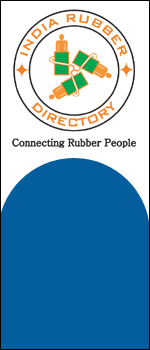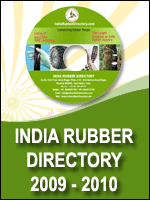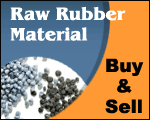Rubber imports may come down
As value added tax (VAT) comes
into force in Kerala rubber trade has moved into a lower tax regime which
experts say will benefit growers and user industries alike. Under the VAT,
natural rubber will have only four percent purchase tax instead of 12.65 percent
that existed till 31st March, 2005. This drastic tax reduction is
expected to reduce the tendency to import rubber by tyre companies and other
consumers, driving consumption in the domestic market.
If the international rubber
price is higher by over Rs. 2.50 a kg. Even duty-free import will become
unattractive since the domestic rate plus the four percent VAT and Rs. 1.50
surcharge will still be cheaper than the import price, tyre industry sources
said. In the past, when domestic prices surged, tyre companies found imports
more viable in view of the 12.65% purchase tax and surcharge in the local
markets.
Rubber growers are set to
benefit out of the new tax regime, as with increasing consumption, prices would
tend to rise. On the other hand consumers will pay lower taxes for procuring
their raw material.
Although kerala, which produces
over 90 percent of India’s natural rubber, stands to lose over Rs. 100 crore
because of the lowering of the tax on rubber, VAT will completely eliminate the
problem of interstate smuggling of the commodity because of the higher rate of
purchase tax prevailed in the State, rubber used to be smuggled into
neighbouring States such as Tamil Nadu and Karnataka where the tax was lower.
Tamil Nadu is yet to adopt VAT, but the eight- percent tax on rubber in the
State automatically brings smuggling to an end. Karnataka has switched to VAT.
In the run-up to the VAT
regime, rubber industry saw its own set of problems cropping up and
disappearing. The State Government’s decision to impose 12.65 percent tax on
the closing stock of March 31 made the traders frantically disposing of their
stock.
Tyre companies and other
consumers too postponed their procurement to April to benefit from the lower
rate of VAT. Prices fell sharply. The Government later changed its mind and
announced that only four percent tax would be levied on the closing stock of
March 31, Prices recovered soon after the trade become active.
As a flipside to the VAT , some
experts point out that small-time rubber dealers, who had never had to pay taxes
as the purchase tax was charged on the buyer at the last point of sale in the
State, will now have to keep books and accounts, perhaps for the first time and
will suffer from complexities of taxation.
The process of bringing
thousands of small dealers under the tax ret is a complex affair, they argue.
However, the Government has given six months’ time for the traders to get
accustomed with VAT.
Imports Continue to rise
The rubber-based industries in
Kerala, mainly tyre manufacturers, would be on a smoother ride due to the
introduction of value-added tax (VAT). The purchase tax of rubber had been
reduced to 4 per cent from the earlier 12.65 per cent from 1st April
and this will help the tyre industry to save Rs. 180 crore per annum according
to some estimates. Of the total production of seven lakh tones of natural
rubber, the tyre industry alone consumes around 60 per cent.
The reduction in tax means Rs
45,000 can be saved for every nine tonnes truck load of rubber.
But the growers are in dilemma
due to the fluctuation in prices and higher imports.
A local grower said the market
today is quite similar to 1995-96 where prices few-the average price for the
year was Rs. 52 per kg. This happened due to low stocks-which stood at just
68,000 tonnes on 31st March, 1995.
But due to increased import in
the subsequent years, there was a glut and prices dropped to an average of Rs
30. Between 1996 and 2001, a total 1,84,000 tonnes of rubber was imported.
Today, the price is in tune with the global prices after almost 10 years.
As on 31st March,
2005, the total stock was 77,000 tonnes, which is one of the major reasons for
the recent increase in prices.
The increased inflow of
imported rubber is giving local growers a headache. According to Rubber Board
sources, total import in 2004-05 was 66,198 tonnes, but the shortfall in supply
with regard to demand is to the tune of 5,000 tonnes only. As the export is very
low-key, the import may cause an increase in stock and the market may face a
similar situation as that of 1995-96.
Lanxess to expand
Production
Lanxess is to expand production
of halobutyl rubber at its two plants in Sarnia, Canada and Antwerp, Belgium.
The combined expansion will come at a cost of Euro 40 million and will increase
lanxess’ total capacity by 25 percent. Lanxess is the second largest producer
of halobutyl rubber in the world, after Exxon Mobil. Lanxess currently operates
as a subgroup of Bayer comprising most of the firm’s rubber and chemicals
activities. Dr. Axel Heitmann, chief executive of Lanxess speaking at the
company’s first ever press conference said the company’s total capacity for
butyl is 200 000 tonnes per annum, implying that the expansion will be 50 000
tonnes.
Ingo Fischer, the new global
product manager for chloroprene rubber at Lanxess Deutschland GmbH said,
“Baypren is still a viable business. Expanding rubber applications like
replacement of natural rubber in air springs is a base for solid growth.” The
company added that it will expand packaging capacity at the plant, to support
increasing use of CR in polyethylene bags.
World rubber
output growth slows down
Though the world NR and SR output rose
to 20.44 tonnes in 2004 representing an increase of 4.9% over previous year,
reports indicate the growth rate has slowed down.
Much of the growth in world NR
out put was the result of sharp rise in Malaysian and Indonesian production,
while Thai output fell marginally. Though there was steady growth of SR
production in the Asia Pacific region and recovery in North Amercia and European
Union, there was sharp drop in other Europe in 2004.
Meanwhile latest study shows
that world NR output is expected to rise by 4.8% in 2005 before slowing it to
1.6% in 2006. Malaysia will lead the increase while other Asia. Africa and Latin
America will see relatively slower growth
World SR output is expected to
slow down to 3% and 2.5% for the next two years because of the fall in other
Europe. However Asia Pacific region will act as the engine for growth in the
next two years.
China Surges
ahead in rubber consumption
Latest estimates of Chinese rubber
consumption indicate that China increased its share of the world market to
almost 21% in 2004 from 18.8% in 2003. The Chinese rubber consumption rate has
been increasing at the rate of 11% per year since 1990.
The ‘China factor’ is bound to
play a crucial role in the coming years. The rapid expansion of the Chinese
economy especially the automotive industry had resulted in an explosion in tyre
demand.
According to China Rubber Industry
Association, rubber consumption is to rise to 3.5m tonnes in 2005 of which 1.5m
tonnes will be NR and 2m will be SR. Meanwhile, china has forecasted to produce
5 million cars in 2005.
Aims to become
world’s No. 1 NR Producer
The Indonesian Government is
planning to make the country the world’s largest m natural rubber (NR) Producer
by 2020, says Mr. Anton Aprupantoni, the Agriculture Minister.
Currently, Indonesia is the
world’s second largest rubber producer after Thailand with a total production of
1.8 million tonnes in 2003 and an anticipated 2 million tonne output in 2004.
Malaysia and India occupy the 3rd and 4th positions in
global NR production.
Indonesia has the largest area
under rubber (3.3 million ha) followed by Thailand and Malasia. However, about
80% of the rubber estates are 20 year old and are owned by small holders.
In a bid to become the No.1
producer, the government in planning to replant 400,000 ha f small holder’s
plantations during 2005-10, according to the Minister.
Latest News
























